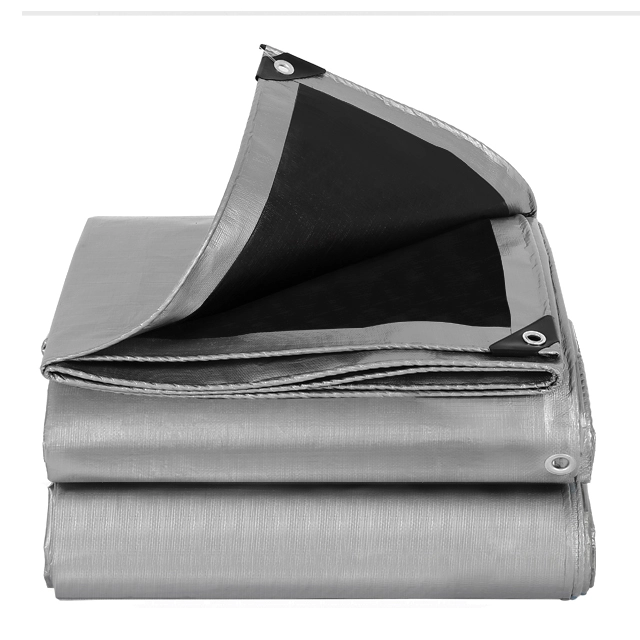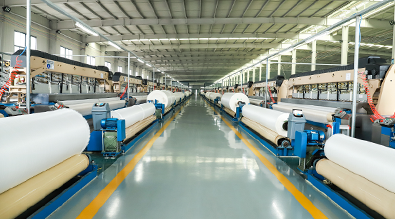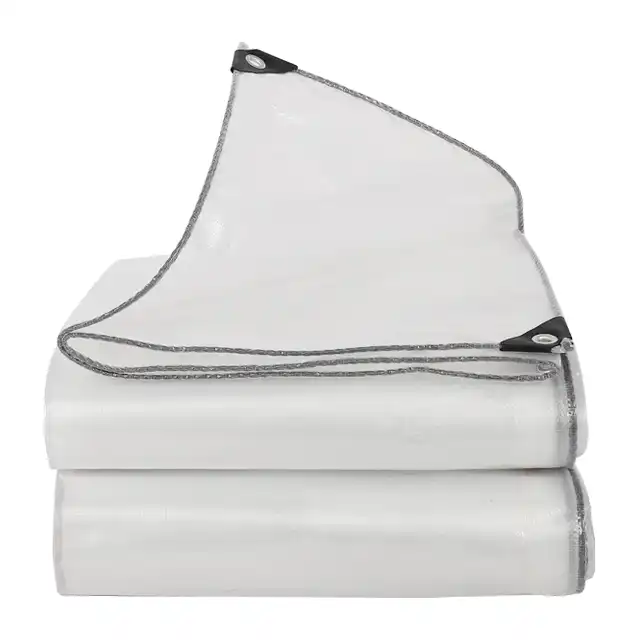Best Tarpaulin for Covering Firewood During Winter
Protecting your firewood investment during harsh winter months requires more than just stacking logs properly. The right firewood tarpaulin serves as your first line of defense against rain, snow, UV damage, and temperature fluctuations that can compromise wood quality and moisture content. When selecting the best tarpaulin for covering firewood during winter, homeowners and commercial users must consider material composition, waterproof ratings, UV resistance, and durability factors that ensure long-term wood protection and optimal burning efficiency throughout the coldest seasons.
Essential Features of Premium Firewood Protection Systems

Material Construction and Weather Resistance Capabilities
Professional-grade firewood tarpaulin construction begins with high-density polyethylene (HDPE) woven fabric combined with low-density polyethylene (LDPE) coating technology. This dual-layer approach provides exceptional tensile strength while maintaining flexibility in extreme temperature conditions. The HDPE woven base offers superior tear resistance, preventing damage from sharp wood edges and environmental stress, while the LDPE coating ensures complete waterproof protection. Modern firewood tarpaulin designs incorporate mesh counts ranging from 10x10 to 14x14, providing optimal balance between strength and weight distribution across woodpiles. Advanced manufacturing processes ensure consistent thickness between 7-12 mil, guaranteeing uniform protection without creating weak points that compromise overall performance. The waterproofing capabilities of professional firewood tarpaulin systems extend beyond basic moisture resistance. Premium products feature 100% waterproof ratings achieved through specialized coating processes that create seamless moisture barriers. This protection prevents water infiltration that leads to wood rot, mold growth, and reduced burning efficiency. Additionally, anti-freezing properties ensure the tarpaulin remains flexible during sub-zero temperatures, preventing cracking and material failure when handling becomes necessary during winter months. The combination of these technical specifications creates a protective environment that maintains optimal wood moisture content between 15-20%, ensuring efficient combustion when firewood reaches your fireplace or wood stove.
UV Protection and Long-Term Durability Standards
Extended exposure to ultraviolet radiation represents one of the most significant threats to tarpaulin integrity and firewood quality preservation. Professional firewood tarpaulin products incorporate UV treatment ranging from 1% to 7%, depending on intended usage duration and environmental exposure conditions. This UV stabilization prevents polymer degradation that causes material brittleness, color fading, and eventual structural failure. Higher UV treatment percentages correspond to longer service life expectations, with premium products designed to withstand continuous outdoor exposure for multiple seasons without significant performance degradation. Durability testing standards for firewood tarpaulin products include tear resistance measurements, puncture strength evaluation, and temperature cycling assessments. Professional-grade materials demonstrate tear resistance capabilities that withstand contact with rough bark surfaces, sharp log ends, and normal handling stresses during wood management activities. The reinforced edge construction provides additional strength at stress concentration points, preventing edge tears that often initiate complete tarpaulin failure. These durability features translate directly into cost-effectiveness for end users, as premium tarpaulins eliminate the need for frequent replacement while maintaining consistent protection performance throughout their extended service life.
Size Optimization and Coverage Configuration Options
Proper firewood tarpaulin sizing requires careful consideration of woodpile dimensions, stacking methods, and seasonal storage requirements. Standard residential firewood stacks typically measure between 4-8 feet in length and 4-6 feet in height, requiring tarpaulin dimensions that provide adequate overhang for complete protection. Professional firewood tarpaulin products offer custom sizing options with maximum widths reaching 5.1 meters, accommodating large-scale commercial operations and extensive residential wood storage systems. The ability to specify exact dimensions ensures optimal coverage without excessive material waste or inadequate protection areas. Roll width capabilities extending to 5.1 meters enable seamless coverage of extended woodpile configurations without requiring multiple tarpaulin sections. This continuous coverage approach eliminates seam vulnerabilities where water infiltration commonly occurs in multi-piece installations. Custom sizing services accommodate specific geometric requirements, including irregular woodpile shapes, integrated storage structures, and multi-season expansion needs. The flexibility in size configuration ensures that both small residential users and large commercial operations receive optimal protection solutions tailored to their specific firewood storage requirements and environmental conditions.
Professional Installation and Maintenance Techniques
Proper Securing Methods and Attachment Systems
Effective firewood tarpaulin installation requires strategic anchor point placement and appropriate fastening hardware selection. Professional installations utilize reinforced aluminum or brass eyelets positioned at 50-100 cm intervals around the tarpaulin perimeter, providing secure attachment points that distribute stress evenly across the material. These eyelets undergo corrosion-resistant treatment to maintain integrity throughout extended exposure to moisture and temperature cycling. The strategic spacing ensures adequate anchor points for various woodpile configurations while maintaining material flexibility for seasonal adjustments and routine access requirements. Securing techniques must account for wind load calculations and seasonal weather pattern variations. Professional firewood tarpaulin installations employ multiple anchor methods, including ground stakes, weighted edges, and structural attachment points where available. The combination approach ensures protection system stability during high wind events while maintaining easy access for wood retrieval throughout the heating season. Proper tension distribution prevents water pooling that leads to material stress concentration and potential failure points. Regular tension adjustment schedules accommodate material settling and seasonal environmental changes that affect tarpaulin performance.
Seasonal Maintenance and Performance Optimization
Routine maintenance protocols extend firewood tarpaulin service life while ensuring consistent protection performance throughout multiple seasons. Monthly inspection schedules identify potential issues before they compromise wood protection, including eyelet integrity assessment, material condition evaluation, and attachment system functionality verification. These proactive maintenance activities prevent minor issues from developing into major failures that require complete tarpaulin replacement during critical winter months. Cleaning procedures remove debris accumulation that can cause abrasive wear and create stress concentration points. Professional maintenance includes removing leaves, snow buildup, and organic matter that retains moisture against the tarpaulin surface. Proper cleaning techniques use mild detergent solutions and soft brushes to avoid material damage while ensuring complete debris removal. Seasonal storage procedures for removable installations include proper folding techniques that prevent crease damage and storage in controlled environments that minimize UV exposure and temperature cycling during non-use periods.
Integration with Existing Wood Storage Infrastructure
Modern firewood tarpaulin systems integrate seamlessly with existing wood storage structures, including covered sheds, lean-to configurations, and freestanding woodpile arrangements. Professional installations consider structural load bearing capabilities, drainage patterns, and access requirement when designing comprehensive protection systems. The integration approach maximizes existing infrastructure investment while providing enhanced protection capabilities that extend beyond basic structural coverage. Ventilation considerations ensure adequate airflow beneath tarpaulin installations, preventing moisture buildup that promotes wood decay and reduces burning efficiency. Professional designs incorporate ventilation gaps at strategic locations that maintain protection integrity while enabling natural air circulation. This balanced approach preserves wood quality during extended storage periods while providing complete weather protection. The integration methodology accommodates future expansion needs and seasonal storage variations that affect overall system requirements throughout multiple heating seasons.
Performance Specifications and Quality Assurance Standards
Testing Protocols and Certification Requirements
Professional firewood tarpaulin products undergo comprehensive testing protocols that verify performance claims and ensure consistent quality standards. These testing procedures include waterproof integrity verification using standardized hydrostatic pressure measurements that simulate extreme weather conditions. Tear resistance testing employs standardized methodologies that measure material strength under controlled stress conditions, ensuring products meet minimum performance requirements for firewood protection applications. UV resistance testing utilizes accelerated weathering chambers that simulate extended sun exposure, providing accurate predictions of material service life under various environmental conditions. Quality assurance protocols extend beyond individual product testing to encompass manufacturing process verification and raw material certification. ISO 9001:2015 certification ensures consistent manufacturing standards that deliver uniform product performance across all production batches. Third-party testing laboratory verification provides independent confirmation of performance specifications, establishing credibility and reliability for end users making critical protection investment decisions. These comprehensive quality assurance measures ensure that firewood tarpaulin products deliver promised performance throughout their intended service life.
Weight Classifications and Application Matching
Professional firewood tarpaulin selection requires matching product weight classifications to specific application requirements and environmental conditions. Standard weight categories range from 85gsm for light-duty residential applications to 180gsm for heavy-duty commercial installations requiring maximum durability. Medium-weight options between 100-150gsm provide optimal balance between protection capability and handling convenience for most residential firewood storage applications. The weight classification system enables precise matching of product specifications to user requirements, ensuring cost-effective protection solutions without over-specification or inadequate performance. Application-specific weight selection considers factors including exposure duration, environmental severity, handling frequency, and budget constraints. Heavier weight classifications provide enhanced puncture resistance and extended service life but require additional handling effort during installation and adjustment procedures. Lighter weight options offer easier handling and reduced storage requirements while maintaining adequate protection for less demanding applications. Professional consultation services help users identify optimal weight classifications based on specific requirements and environmental conditions, ensuring maximum value and protection effectiveness.
Color Options and Aesthetic Integration
Modern firewood tarpaulin products offer extensive color selection options that enable aesthetic integration with existing landscape designs and architectural elements. Standard color options include natural earth tones that blend seamlessly with outdoor environments, while specialized colors accommodate specific aesthetic requirements and visual preferences. Color selection considerations extend beyond appearance to include heat reflection properties that affect wood temperature management and material longevity under intense sun exposure conditions. Professional color selection services consider environmental factors including surrounding vegetation, structural elements, and seasonal appearance changes that affect overall visual integration. Specialized colors may incorporate enhanced UV reflection properties that reduce material temperature buildup and extend service life in high-exposure applications. Custom color matching services accommodate specific requirements for commercial installations and architectural integration projects where standard color options prove insufficient. The comprehensive color selection approach ensures that functional protection requirements align with aesthetic objectives throughout the installation service life.
Conclusion
Selecting the optimal firewood tarpaulin for winter protection requires careful evaluation of material specifications, installation requirements, and long-term performance expectations. Professional-grade PE tarpaulin products offering 100% waterproof protection, comprehensive UV resistance, and reinforced construction provide superior value through extended service life and consistent protection performance. The investment in quality tarpaulin systems protects valuable firewood resources while ensuring optimal burning efficiency throughout demanding winter conditions.
For homeowners and commercial operators seeking reliable firewood protection solutions, partnering with established manufacturers ensures access to proven technology and comprehensive support services. Linyi Shengde Plastic Co., Ltd. stands as a leading China Firewood Tarpaulin factory with over two decades of manufacturing expertise and international recognition. As a trusted China Firewood Tarpaulin supplier, the company offers comprehensive product lines including High Quality Firewood Tarpaulin options engineered for demanding winter applications. Their position as a premier China Firewood Tarpaulin manufacturer enables competitive Firewood Tarpaulin price structures while maintaining superior quality standards. Whether seeking China Firewood Tarpaulin wholesale opportunities or individual Firewood Tarpaulin for sale, their advanced manufacturing capabilities and quality commitment deliver exceptional value for firewood protection investments. Contact info@shengdetarp.com to explore professional tarpaulin solutions tailored to your specific firewood protection requirements and discover why Shengde represents the pinnacle of protective tarpaulin technology.
References
1. Forest Products Laboratory Technical Manual: Wood Moisture Management in Outdoor Storage - Johnson, R.M., Anderson, P.K., & Williams, D.R. - U.S. Department of Agriculture Forest Service
2. Polyethylene Tarpaulin Performance Standards for Agricultural Applications - Chen, L.H., Kumar, S., & Thompson, M.J. - International Journal of Polymer Materials and Applications
3. Weather Protection Systems for Biomass Storage: Engineering Guidelines - Smith, A.B., Rodriguez, C.M., & Lee, K.S. - American Society of Agricultural Engineers
4. UV Degradation and Stabilization of Polyethylene Materials in Outdoor Applications - Brown, T.L., Davis, E.W., & Martinez, J.A. - Journal of Applied Polymer Science




